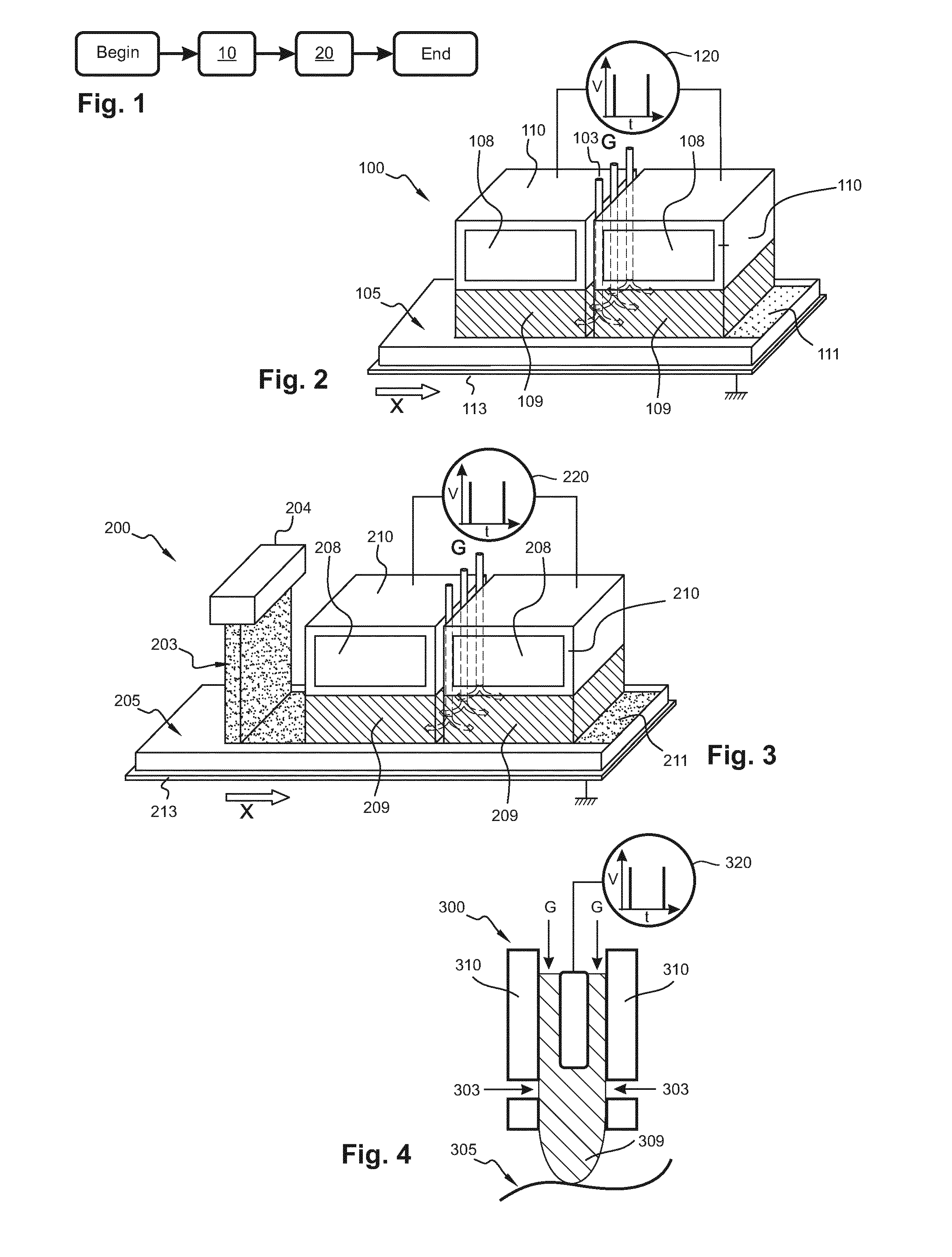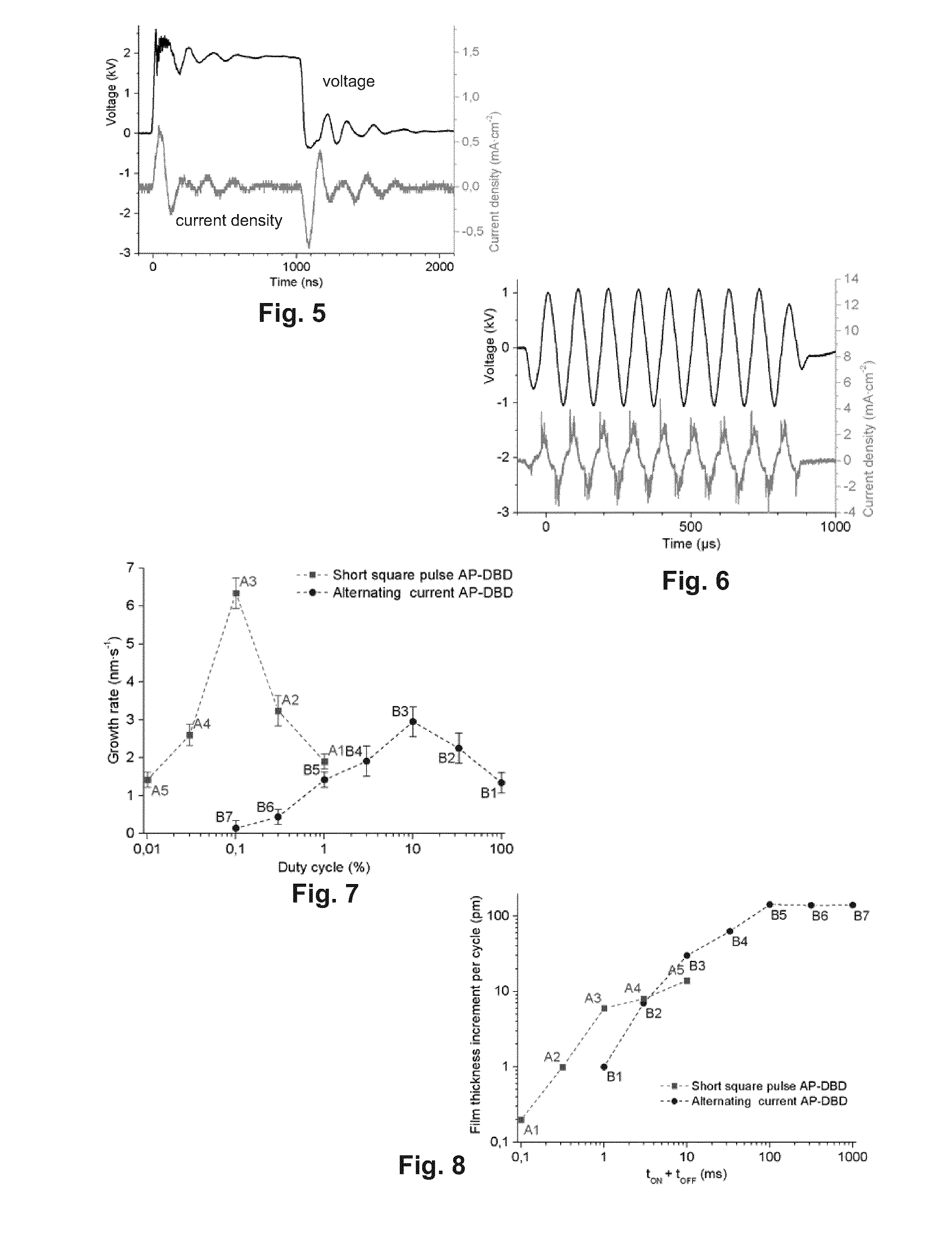Method for Forming Regular Polymer Thin Films Using Atmospheric Plasma Deposition
a technology of atmospheric plasma deposition and polymer thin film, which is applied in the direction of pretreatment surfaces, electric discharge tubes, coatings, etc., can solve the problems of preventing the application of cvd processes in many cases, affecting the practical application of cvd processes, and complex structure plasma-polymers obtained by cvd are ill suited for applications, etc., to achieve the effect of reducing the amount of energy, fast rise time and convenient adsorption
- Summary
- Abstract
- Description
- Claims
- Application Information
AI Technical Summary
Benefits of technology
Problems solved by technology
Method used
Image
Examples
Embodiment Construction
[0055]FIG. 1 is a flow chart, which illustrates the main steps of a preferred embodiment of the invention. In a first step 10, a mixture comprising at least one polymer forming material is provided. While the mixture may consist in only the polymer forming material as such, it may alternatively comprise other components, such as for example an organic solvent. The inclusion of such additional components may for example have an impact on the film deposition rate or on the porosity of the deposited layer. The polymer forming material is advantageously a monomer, which is chosen so that the regular and linear polymer chain comprising the monomer exhibits the properties, which the targeted application requires. Among the virtually infinite list of monomers that can be deposited by the method described herein, can be cited: N-isopropylacrylamide (NIPAAm), suitable for the growth of temperature responsive polymers; heptadecafluorodecylmethacrylate (HFDMA), suitable for the preparation of ...
PUM
| Property | Measurement | Unit |
|---|---|---|
| temperature | aaaaa | aaaaa |
| temperature | aaaaa | aaaaa |
| temperature | aaaaa | aaaaa |
Abstract
Description
Claims
Application Information
 Login to View More
Login to View More - R&D
- Intellectual Property
- Life Sciences
- Materials
- Tech Scout
- Unparalleled Data Quality
- Higher Quality Content
- 60% Fewer Hallucinations
Browse by: Latest US Patents, China's latest patents, Technical Efficacy Thesaurus, Application Domain, Technology Topic, Popular Technical Reports.
© 2025 PatSnap. All rights reserved.Legal|Privacy policy|Modern Slavery Act Transparency Statement|Sitemap|About US| Contact US: help@patsnap.com



